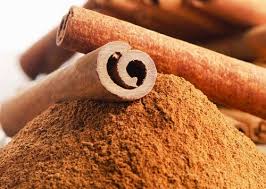In eastern medicine, cinnamon has sweet taste, warmth, blood vessels, heart support, cold symptoms, coma, slow pulse, small, weak heart (vascular disease, hypotension) and critical cholera.
Cinnamon
The scientific name is Cinnamomum cassia Blume. Belonging to the Lauraceae. family.
Cinnamon is a perennial tree, in mature trees can be over 15m high, the diameter can reach 40cm. Cinnamon have single leaves grows or oppositifolious, the top of the leaves are green, the leaves are dark green, the leaves are about 18-20cm long, about 6-8cm wide, petiole about 1cm long. It has rounded trunk, gray outer shell

Ingredients
Parts of cinnamon trees such as bark, leaves, flowers, wood, roots contain essential oils, especially in the shell with the highest concentration of oil, sometimes reaching 4 - 5%. Cinnamon essential oil is yellow, the main component is Andean Cinamide, about 70 - 90%. Cinnamon essential oil is fragrant, spicy, sweet.
Effect
In eastern medicine, cinnamon has sweet taste, warmth, blood vessels, heart support, cold symptoms, coma, slow pulse, small, weak heart (vascular disease, hypotension) and critical cholera. . Cinnamon in Oriental medicine is one of four valuable drugs: Ginseng, Velvet, Cinnamon, Aconitum.
Cinnamon oil helps treat some respiratory diseases, stimulating blood circulation, making the body warm, anti-cold and antiseptic. Bacteria is affected by Cinnamon essential oil include: Streptococcus oralis, Streptococcus anginosus, Streptococcus intermedius and Streptococcus sanguis, Enterobacter aerogenes and Micrococcus roseus.

